Tech_Center_Suspension
March 25, 2009
By Jason Giacchino
In the early days of ATVs, the powers that be saw fit to allow the balloony nature of the machine’s tires to act as a cushioning barrier between the rigid frame and the imperfections of the ground. The system was crude and the ride jarring, but the suffering of early pioneers did aid engineers in the development of off-road suspension. Early suspension was simple but adequate in dulling down the trail clatter but like in most industries; time has been synonymous with advancement.
These days ATVs come equipped with several suspension configuration options dependant mostly upon the size/ type of riding the machine in question has been designed to tackle. To achieve optimal performance from your suspension, the first step is to identify the type of units that came equipped in your machine. Here is a brief rundown:
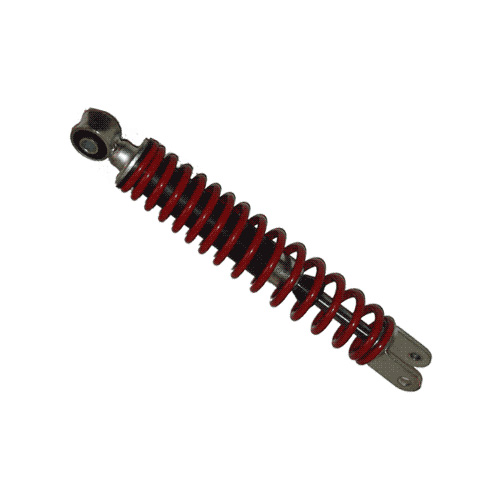 Gas-Filled/ Non-Adjustable
Gas-Filled/ Non-Adjustable
Vintage quads, kids ATVs & minis, and base-level models will likely make use of non-adjustable shocks. They are easily identified by a lack of external controls/ reservoir. They typically operate with a single gas-filled chamber and an outer coil-over spring to provide motion damping. Unfortunately these units not only offer no specific setup options, they are typically non-rebuildable.
Preload Adjustable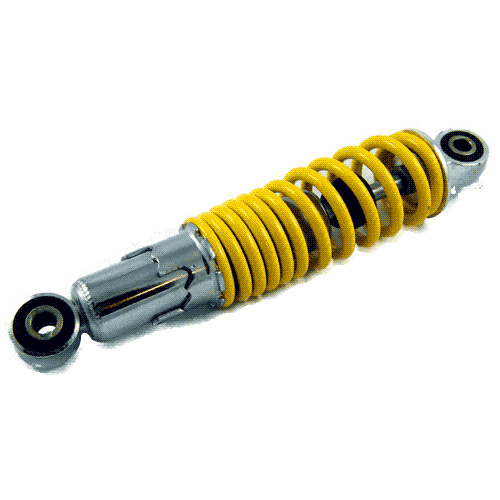
Preload refers to the amount of tension/ compression placed upon the shock’s spring. Preload adjustable shocks are commonplace on utility-oriented quads and mid-level equipment. Typically the preload can be adjusted either by a pair of threaded lock rings or predetermined preload settings. Either way, preload can make suspension feel stiffer or softer by increasing or decreasing the amount of tension placed upon the shock’s external spring.
Compression Adjustable
Compression adjustable shocks are found on most sport/ performance quads (usually with preload adjustment as well). Compression refers to the internal oil-damping circuit. In a nutshell, modern suspension inhibits terrain-shock by slowing the flow of oil through a small diaphragm. Once compressed, the spring then kicks in and straightens the shock back out to its full length (rebound). Adjusting the compression increases or decreases the amount of oil allowed to flow through the diaphragm. High and low speed compression adjustment refers to the speed at which the shock moves (not the ATV itself) and offers further fine-tuning to the feel of the suspension action in all conditions.
Rebound Adjustable
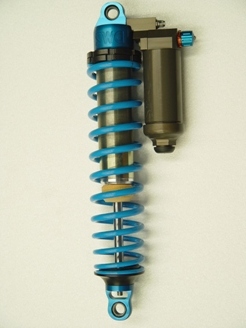 Found on high-end models and race-ready ATVs, rebound adjustable suspension is usually accompanied by both compression and preload adjustability. Rebound works on the simple premise that a spring holds a great deal of latent energy when compressed. When your shock compresses, so too does the spring. If not for the internal rebound circuit, the spring would expand rapidly (and violently)- which is why a blown shock often appears bouncy. Rebound control affects the volume of oil that is allowed to flow back through the diaphragm as the shock decompresses. When set properly, the quad should neither spring back too quickly nor “pack-up” when encountering staggered obstacles.
Found on high-end models and race-ready ATVs, rebound adjustable suspension is usually accompanied by both compression and preload adjustability. Rebound works on the simple premise that a spring holds a great deal of latent energy when compressed. When your shock compresses, so too does the spring. If not for the internal rebound circuit, the spring would expand rapidly (and violently)- which is why a blown shock often appears bouncy. Rebound control affects the volume of oil that is allowed to flow back through the diaphragm as the shock decompresses. When set properly, the quad should neither spring back too quickly nor “pack-up” when encountering staggered obstacles.
Air Shocks
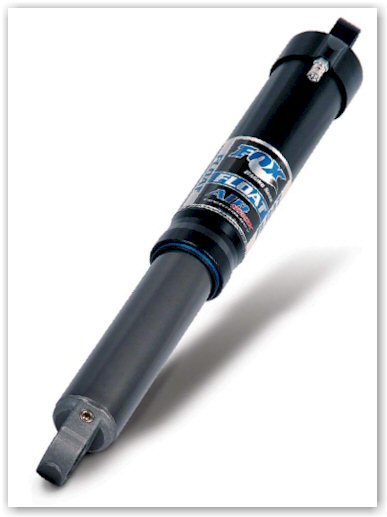 Used on mountain bikes for years, the air shock presents an interesting take on what is required to make a shock do its job while shaving weight in the process. As opposed to a coil spring to offer resistance and shock rebound, the air shock relies upon a volume of compressed air within an enclosed chamber. The idea, in its simplest form, is that air can be compressed only so far. When a piston is pushed into a sealed chamber, the rider is offered a nearly limitless number of tuning options by adding or removing air. It should be noted that while air shocks are fairly new technology in the realm of quads, they have existed first on motorcycles then on mountain bikes for many years.
Used on mountain bikes for years, the air shock presents an interesting take on what is required to make a shock do its job while shaving weight in the process. As opposed to a coil spring to offer resistance and shock rebound, the air shock relies upon a volume of compressed air within an enclosed chamber. The idea, in its simplest form, is that air can be compressed only so far. When a piston is pushed into a sealed chamber, the rider is offered a nearly limitless number of tuning options by adding or removing air. It should be noted that while air shocks are fairly new technology in the realm of quads, they have existed first on motorcycles then on mountain bikes for many years.
Custom Valving
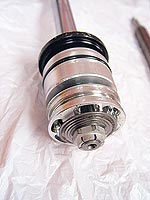 Especially popular among racers, suspension tuners and aftermarket shock builders often offer the option of custom valved components. Since the basis of shock absorption relies upon the flow of oil through a valve-stack (a series of shims that slow the rate at which the oil can pass), tuners are able to customize the sizes and number of valves in accordance to the precise size and skill level of the rider.
Especially popular among racers, suspension tuners and aftermarket shock builders often offer the option of custom valved components. Since the basis of shock absorption relies upon the flow of oil through a valve-stack (a series of shims that slow the rate at which the oil can pass), tuners are able to customize the sizes and number of valves in accordance to the precise size and skill level of the rider.
To discuss this article, click here
